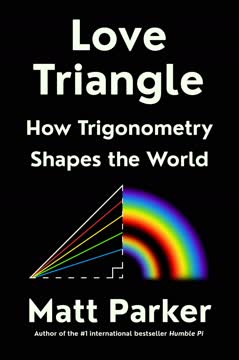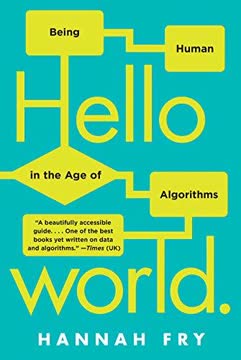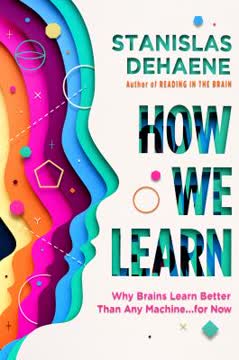Key Takeaways
1. Mathematics shapes our history and biology
Mathematics has shaped our history: through the ancestors who won evolution's numbers game and the diseases that strained and filtered our species.
Our biological foundation. Mathematics is deeply intertwined with our evolutionary history and physiological makeup. The Fibonacci sequence, for example, appears in the spiral arrangements of flowers and pinecones, while the golden ratio is found in the proportions of the human body. These mathematical patterns have influenced our aesthetic preferences and our understanding of beauty.
Cultural evolution. Mathematical concepts have co-evolved with human civilization. Ancient civilizations developed number systems based on their physical attributes, such as the Babylonians' sexagesimal system (base 60) or the Maya's vigesimal system (base 20). These systems reflected their cultural needs and understanding of the world, shaping their societies and technological advancements.
Examples of mathematics in nature:
- Fibonacci sequence in flower petals and seed arrangements
- Golden ratio in human body proportions and nautilus shells
- Fractal patterns in coastlines, trees, and blood vessels
2. Exponential growth: Powerful yet often misunderstood
Quantities that grow exponentially might appear to grow slowly at first, but they can take off quickly in a way that seems unexpected.
Deceptive beginnings. Exponential growth often starts slowly, making it easy to underestimate its potential impact. This phenomenon is seen in various contexts, from population growth to viral spread and compound interest. The initial stages may appear manageable, but the rapid acceleration can quickly lead to overwhelming numbers.
Real-world implications. Understanding exponential growth is crucial in many fields:
- Finance: Compound interest in investments and loans
- Technology: Moore's Law in computer processing power
- Biology: Population growth and viral infections
- Climate change: Accumulation of greenhouse gases
Failing to recognize exponential patterns can lead to serious miscalculations, as seen in the underestimation of COVID-19's spread in its early stages or the potential impacts of climate change.
3. False positives and negatives: The illusion of certainty in medical tests
We should remember that screens are not diagnostic tests and that their results should be taken with a pinch of salt.
Test accuracy paradox. Medical tests can be highly accurate yet still produce misleading results, especially when screening for rare conditions. This is due to the interplay between a test's sensitivity (ability to correctly identify those with the condition) and specificity (ability to correctly identify those without the condition).
Implications for healthcare. Understanding the limitations of medical tests is crucial for both healthcare providers and patients:
- False positives can lead to unnecessary anxiety and further testing
- False negatives may provide false reassurance and delay treatment
- Prevalence of the condition in the population affects the test's predictive value
Key concepts:
- Positive predictive value: Probability that a positive result is truly positive
- Negative predictive value: Probability that a negative result is truly negative
- Base rate fallacy: Neglecting the prevalence of a condition when interpreting test results
4. Statistical fallacies: Misuse of numbers in courtrooms and media
We must ensure that the person with the most shocking statistics doesn't always win the argument, by demanding an explanation of the maths behind the figures.
Manipulating perception. Statistics can be easily misused to sway public opinion or influence legal decisions. Common tactics include:
- Cherry-picking data
- Using relative vs. absolute risk
- Presenting correlation as causation
- Employing misleading graphics or scales
Critical thinking is key. To combat statistical manipulation, it's essential to:
- Question the source and methodology of presented statistics
- Look for context and comparisons
- Understand the difference between correlation and causation
- Be aware of common fallacies like the prosecutor's fallacy or ecological fallacy
Real-world examples:
- Misuse of DNA evidence in criminal trials
- Misleading health claims in advertising
- Biased reporting of scientific studies in the media
5. Number systems: From ancient civilizations to modern technology
Understanding the number systems around us, for example, gives us an insight into the history and culture of our species.
Cultural reflections. Number systems are not just mathematical constructs but reflections of the cultures that created them. The Babylonian sexagesimal system, for instance, still influences our measurement of time and angles. The Maya vigesimal system reflects their advanced astronomical knowledge.
Technological implications. Our modern decimal system and the binary system used in computers each have their strengths and weaknesses:
Decimal system:
- Intuitive for human counting (based on 10 fingers)
- Easier for mental arithmetic
Binary system:
- Efficient for electronic computation
- Basis for all digital technology
Understanding these systems helps us appreciate the evolution of human thought and the foundations of our technological world. It also highlights the importance of choosing the right system for the task at hand, as seen in the catastrophic failure of the Mars Climate Orbiter due to a unit conversion error between metric and imperial systems.
6. Algorithmic optimization: Revolutionizing everyday life
Algorithms can provide us with information that facilitates vital decisions, but in the end they are no substitute for our own subtle, biased, irrational, inscrutable, but ultimately human judgements.
Ubiquitous influence. Algorithms are reshaping numerous aspects of our lives:
- Navigation: GPS and route optimization
- E-commerce: Product recommendations and pricing
- Social media: Content curation and targeted advertising
- Healthcare: Diagnostic tools and treatment planning
Balancing efficiency and humanity. While algorithms can process vast amounts of data and optimize complex systems, they have limitations:
- Lack of contextual understanding
- Potential for bias in training data
- Difficulty in handling nuanced or ethical decisions
It's crucial to use algorithms as tools to support human decision-making rather than replacing human judgment entirely. This requires ongoing evaluation of algorithmic outcomes and maintaining human oversight in critical areas.
7. Mathematical epidemiology: Predicting and controlling disease outbreaks
Mathematical epidemiology provides a way to assess and understand these decisions. It explains why it is better for everyone if you stay away from work or school if you are ill.
Modeling disease spread. Mathematical models, such as the SIR (Susceptible, Infectious, Recovered) model, help predict the course of disease outbreaks and evaluate intervention strategies. Key concepts include:
- R0 (basic reproduction number): Average number of secondary infections caused by one infected individual
- Herd immunity threshold: Proportion of immune individuals needed to prevent sustained disease spread
- Contact networks: Patterns of interactions that facilitate disease transmission
Informing public health decisions. Epidemiological models guide crucial interventions:
- Vaccination strategies
- Quarantine and isolation measures
- Resource allocation during outbreaks
Real-world applications:
- Predicting the spread of COVID-19
- Evaluating the effectiveness of lockdown measures
- Designing optimal vaccination schedules for childhood diseases
Understanding these models empowers individuals to make informed decisions about their health and helps policymakers implement effective disease control measures.
Last updated:
FAQ
What's The Math of Life and Death about?
- Exploring mathematics in life: The book examines how mathematical principles influence our daily experiences, from health to finance, emphasizing their practical applications.
- Real-life stories: Kit Yates uses narratives to show math's impact on real-world situations, such as medical diagnoses and legal cases, highlighting both its power and pitfalls.
- Seven key principles: The author outlines seven crucial mathematical concepts, including exponential growth and probability, each explored in a dedicated chapter.
Why should I read The Math of Life and Death?
- Accessible to all: Yates presents complex ideas engagingly and understandably, making it suitable for readers without a strong math background.
- Practical applications: The book provides tools for better decision-making in daily life, such as interpreting medical test results and understanding media statistics.
- Awareness of pitfalls: It highlights common misunderstandings of math, encouraging critical thinking and skepticism towards numerical claims.
What are the key takeaways of The Math of Life and Death?
- Math is everywhere: Mathematics underpins many life aspects, from biology to economics, enhancing decision-making by understanding these connections.
- Importance of context: Misleading figures can lead to incorrect conclusions, emphasizing the need for context when interpreting statistics and probabilities.
- Critical thinking skills: The book advocates for questioning numerical claims, encouraging clarity and understanding over accepting figures at face value.
What are some examples of mathematical principles discussed in The Math of Life and Death?
- Exponential growth: Yates explains rapid changes through examples like population dynamics and financial investments, crucial for understanding viral spread and economic bubbles.
- Capture-recapture method: This method estimates animal populations and is applicable in fields like public health, highlighting the power of sampling and statistical inference.
- Sensitivity and specificity: These concepts in medical testing are vital for evaluating diagnostic test accuracy, helping patients make informed health decisions.
How does The Math of Life and Death address the misuse of statistics?
- Case studies: Yates provides real-life examples of statistical misuse, such as in legal cases, illustrating the consequences of poor reasoning.
- Prosecutor's fallacy: The book discusses this fallacy, where evidence probability is misinterpreted, highlighting the dangers of relying solely on statistics.
- Ecological fallacy: Yates explains this fallacy, where group statistics lead to incorrect individual assumptions, crucial for avoiding erroneous conclusions.
How does The Math of Life and Death relate to public health?
- Vaccination strategies: Mathematical models inform strategies to achieve herd immunity, emphasizing high vaccination rates to prevent outbreaks.
- Epidemic prediction: Yates illustrates how epidemiology predicts epidemics and guides public health responses, essential for managing health crises.
- Case studies: Real-world examples, like the Disneyland measles outbreak, demonstrate the consequences of vaccination rates and public health decisions.
What role does probability play in The Math of Life and Death?
- Understanding risk: Probability helps readers understand outcome likelihoods in life, from medical diagnoses to financial decisions.
- Misinterpretations: The book highlights common probability misinterpretations, encouraging critical thinking and skepticism.
- Practical applications: Yates provides advice on applying probability concepts in everyday life, empowering readers to navigate a data-driven world.
How does The Math of Life and Death encourage critical thinking?
- Questioning numerical claims: Yates urges readers to seek clarity and understanding, fostering an analytical mindset when encountering data.
- Real-life examples: The book uses stories to illustrate the consequences of accepting figures without scrutiny, demonstrating critical evaluation's importance.
- Empowerment through knowledge: By equipping readers with mathematical tools, Yates empowers them to make informed decisions and challenge misleading information.
What specific mathematical concepts are covered in The Math of Life and Death?
- S-I-R model: This model categorizes individuals as Susceptible, Infective, or Removed, foundational for understanding disease spread.
- Optimal stopping strategies: Yates explains strategies like the 37% rule, helping individuals make decisions when faced with multiple options.
- Exponential growth: The author discusses how diseases spread exponentially, crucial for grasping infectious disease dynamics.
How does Kit Yates use storytelling in The Math of Life and Death?
- Personal narratives: Yates incorporates stories of individuals affected by math principles, creating an emotional connection and illustrating real-world impacts.
- Historical context: The author provides historical examples to contextualize concepts, helping readers understand public health strategies' evolution.
- Engaging anecdotes: The book is filled with anecdotes that make complex ideas relatable, keeping readers interested and enhancing understanding.
How does The Math of Life and Death address the anti-vaccination movement?
- Impact of misinformation: The book discusses how misinformation, particularly around the MMR vaccine, leads to decreased vaccination rates and disease outbreaks.
- Mathematical modeling of vaccination: Yates uses models to demonstrate herd immunity's importance, underscoring community responsibility.
- Public health messaging: The author emphasizes clear messaging to combat vaccine hesitancy, essential for ensuring high vaccination rates.
What are the implications of mathematical errors discussed in The Math of Life and Death?
- Real-world consequences: Yates illustrates how errors can lead to catastrophic outcomes, highlighting the importance of accuracy in calculations.
- Learning from mistakes: The book advocates for learning from past mistakes to prevent future errors, improving decision-making in various fields.
- Critical evaluation of data: Yates encourages critical evaluation of data and statistics, vital for making informed decisions and avoiding misinterpretation pitfalls.
Review Summary
The Math of Life and Death explores how mathematics shapes our world, from medicine to law to media. Yates uses real-world examples to illustrate mathematical concepts without equations, making complex ideas accessible. Readers appreciate the clear explanations and engaging storytelling, particularly enjoying chapters on medical statistics, legal applications, and epidemiology. Some found familiar content, while others were fascinated by new insights. The book effectively demonstrates math's relevance in everyday life, though a few reviewers desired more depth or clarity on the seven principles mentioned in the subtitle.
Similar Books






Download PDF
Download EPUB
.epub digital book format is ideal for reading ebooks on phones, tablets, and e-readers.





